Mint, with its refreshing aroma and versatile culinary uses, is a wonderful addition to any garden.
As an enthusiastic gardener and herb aficionado, I find mint to be one of the most rewarding plants to grow. It’s not only easy to cultivate but also offers a range of benefits, from its numerous health properties to its ability to enhance various dishes.
Mint’s hardy nature makes it suitable for gardeners of all levels, including those just starting their herb gardening journey.
Let’s explore the benefits of growing mint and take a look at some of my favorite varieties.
Benefits of Growing Mint
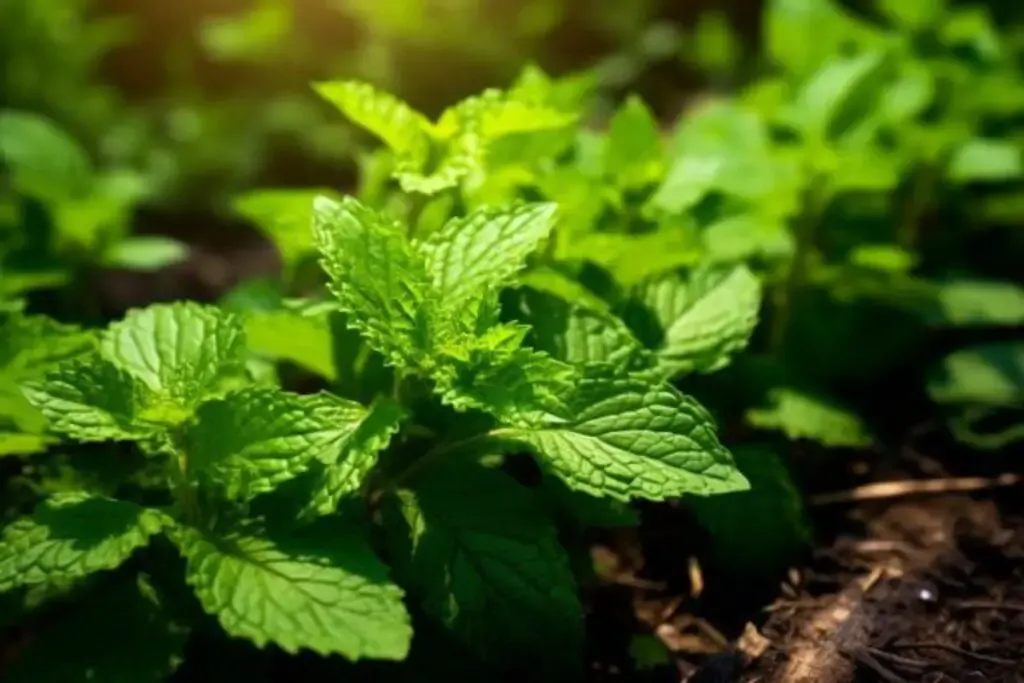
1. Culinary Versatility
Mint is a highly versatile herb in the kitchen. It can be used in a wide array of dishes, from refreshing summer drinks and salads to savory meals and desserts.
Having fresh mint on hand opens up a world of culinary possibilities.
2. Medicinal Properties
Mint is renowned for its medicinal properties. It has been used for centuries to aid digestion, relieve headaches, and soothe stomach ailments.
Growing mint gives you easy access to a natural remedy for various minor health issues.
3. Easy to Grow and Maintain
One of the best things about mint is its ease of growth.
Mint is a hardy plant that thrives with minimal care, making it an ideal choice for beginner gardeners or those with less time for garden maintenance.
My Favorite Mint Varieties
There are many varieties of mint, each with its unique flavor and aroma. Here are three that I particularly enjoy growing:
1. Peppermint
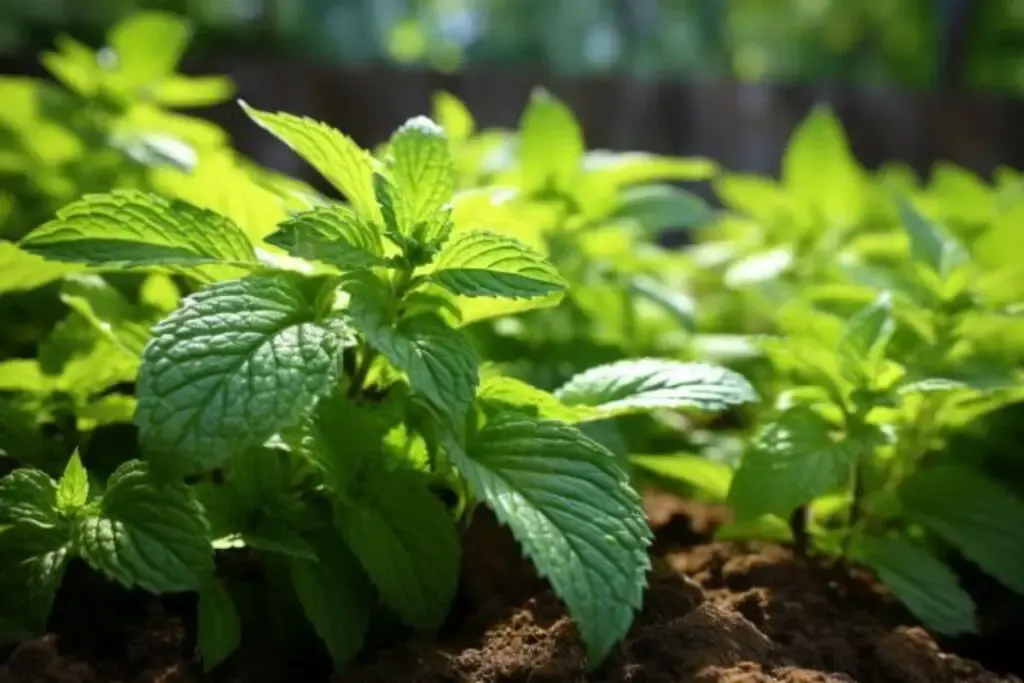
Known for its strong, classic minty flavor, peppermint is great for teas, desserts, and medicinal uses. It’s a vigorous grower and can help soothe digestive issues.
2. Spearmint
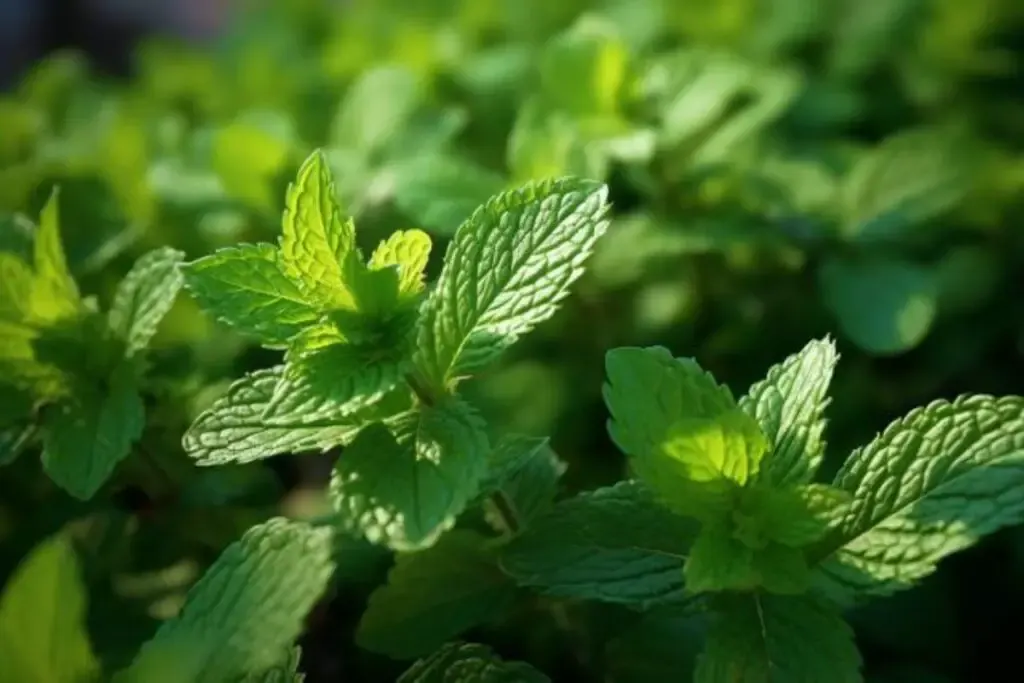
Milder than peppermint, spearmint is often used in cooking and cocktails. It has a sweet flavor that makes it versatile in both sweet and savory dishes.
3. Chocolate Mint
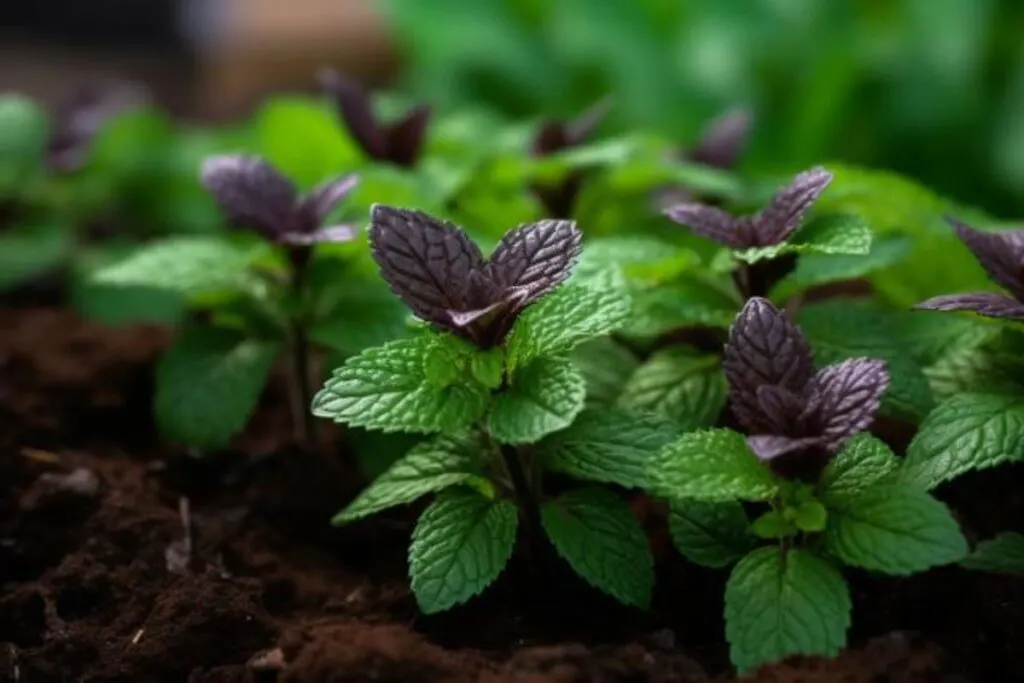
This variety has a unique, chocolatey undertone, making it a favorite for desserts and drinks. It’s as easy to grow as other mints and adds an interesting twist to dishes.
Mint Care
Mint is one of the most low-maintenance and rewarding herbs to grow, making it a favorite among gardeners of all skill levels. Its hardy nature and minimal care requirements allow it to thrive in various conditions.
Here are some key tips on how to care for your mint plants to ensure they grow healthy and abundant.
Planting
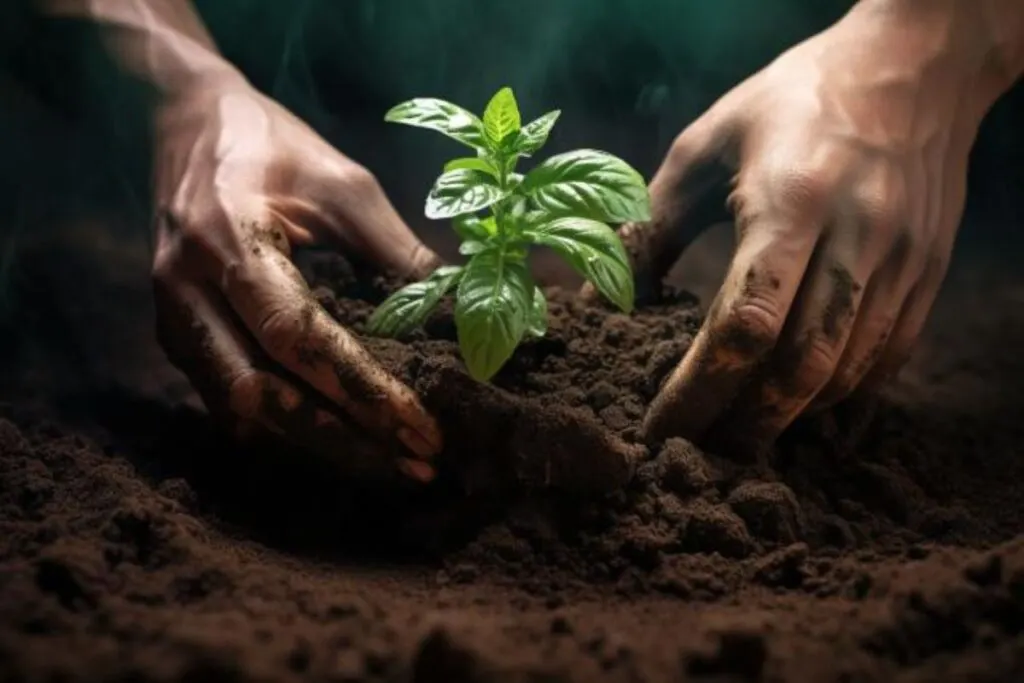
Mint can be grown from seeds, cuttings, or transplants. Planting from cuttings or transplants is generally more successful than starting from seeds.
Mint tends to spread, so consider planting it in a container or a designated area in your garden to keep it from taking over.
If planting in the ground, space the plants about 18 to 24 inches apart to give them room to grow.
Light
Mint prefers full sun to partial shade. While it can grow in various light conditions, it thrives best with at least 4-6 hours of sunlight a day.
In hotter climates, some afternoon shade can be beneficial to prevent the leaves from getting scorched.
Soil
Mint isn’t picky about soil but grows best in rich, well-draining soil. It can tolerate a range of soil types, including clay and sandy soils, as long as there is good drainage.
The ideal soil pH for mint is slightly acidic to neutral (pH 6.0 to 7.0).
Water
Mint likes consistent moisture but doesn’t do well in overly soggy soil. Water the plant when the top inch of soil feels dry to the touch.
Ensure the soil is moist but not waterlogged, as mint is susceptible to root rot in too-wet conditions.
Temperature and Humidity
Mint is quite adaptable and can grow in a wide range of temperatures. It prefers moderate to cool climates but can withstand some heat if provided with enough water and some shade.
Mint also grows well in humid conditions but requires good air circulation to prevent fungal diseases.
Fertilizer
Mint doesn’t require much fertilization. If you’re growing mint in containers, you can feed it with a balanced, all-purpose fertilizer once or twice during the growing season.
For mint growing in the ground, applying compost or a general-purpose fertilizer in the spring should be sufficient.
Harvesting Mint
Harvesting mint is as enjoyable as growing it. The best time to harvest is in the morning when the essential oils are strongest.
You can begin harvesting when the plants have multiple sets of leaves, usually about 8 inches tall. Snip the stems just above a pair of leaves; this encourages the plant to branch out and become bushier.
Regular harvesting helps to keep the plant vigorous and healthy. Mint leaves are best used fresh, but they can also be dried or frozen for later use.
Pruning
Pruning is an important aspect of mint care. It helps to keep the plant healthy and prevents it from becoming leggy.
Prune mint plants regularly by cutting back the top growth to promote bushier, more compact plants. This also helps to delay flowering, as mint leaves can lose some of their flavor once the plant starts to flower.
Propagating
Mint is one of the easiest herbs to propagate. You can propagate it from cuttings, division, or layering.
To propagate from cuttings, simply cut a 4-6 inch stem from an existing plant, remove the lower leaves, and place it in water until roots develop.
Then, plant the rooted cutting in the soil. Mint can also be propagated by dividing the root ball of an established plant or by layering, where a stem is pinned to the ground until it roots.
How to Grow Mint From Seed
Growing mint from seed can be a bit challenging, as it germinates irregularly. If you choose to start from seeds, sow them indoors in a seed-starting mix and keep them moist until they germinate.
Be patient, as germination can be slow and sporadic. Once the seedlings have developed a few sets of true leaves, they can be transplanted outdoors or into pots.
Growing in Pots
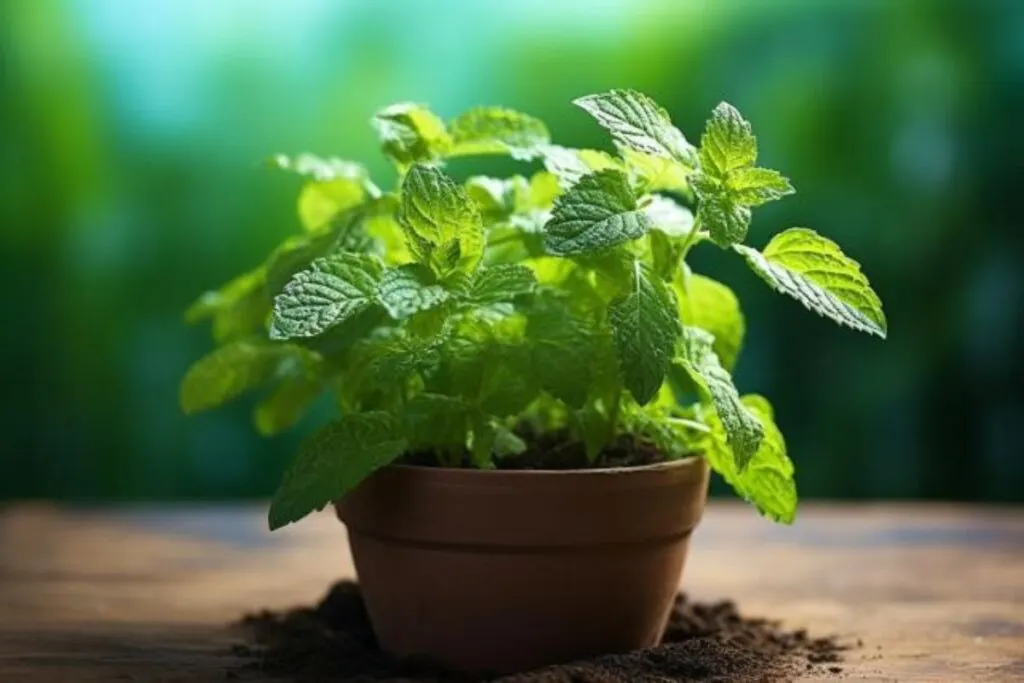
Mint is ideal for container gardening due to its invasive nature. Growing mint in pots helps contain its spread and makes it easier to manage.
Use a pot with adequate drainage and fill it with a quality potting mix. Ensure that the mint is watered regularly and placed in a spot where it gets plenty of sunlight.
Pots also make it easy to bring mint indoors during winter in colder climates.
Overwintering
Overwintering mint is relatively straightforward, especially in milder climates where it can often survive outdoors with minimal care.
In regions with harsh winters, however, you may need to take some extra steps to protect your mint plants. Applying a thick layer of mulch can help insulate the roots from freezing temperatures.
Another option is to pot your mint and bring it indoors during the winter months, placing it in a sunny window to maintain growth.
Transplanting
Transplanting mint is a common practice, especially when it outgrows its current space or to manage its invasive nature.
The best time to transplant mint is in the spring or fall when the weather is cooler. When transplanting, be sure to give the plant plenty of water to help it establish in its new location.
Remember, mint can spread quickly, so consider confining it to a pot or a specific area in your garden.
Common Pests & Diseases
Mint is generally resistant to pests and diseases, but it can occasionally face issues like rust, powdery mildew, and aphids.
Good air circulation, proper watering, and regular harvesting can help prevent these problems. If pests or diseases do occur, they can often be managed with organic remedies or, in severe cases, appropriate fungicides or pesticides.
Growing mint adds a touch of freshness and flavor to your garden and your culinary creations. This easy-to-grow herb is perfect for gardeners of all experience levels.
Whether used in a soothing tea, a refreshing cocktail, or a flavorful dish, mint is a versatile and indispensable herb in the kitchen.
Enjoy the process of growing, harvesting, and using your homegrown mint, and delight in the simple pleasures it brings to your gardening and culinary adventures.

